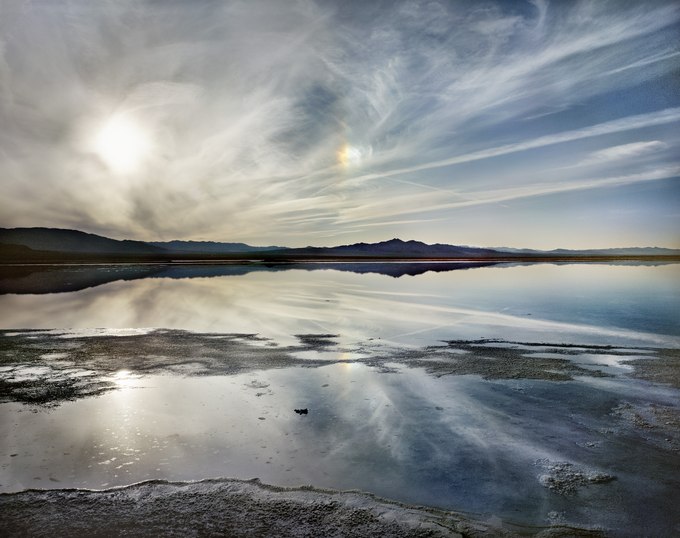Driving through the Mojave Desert in southeastern California, I passed through a wild, open country dotted with abandoned truck stops, motels, and restaurants along old Route 66, now supplanted by nearby Interstate 40. Outside Amboy – a town surrounded by cinder cones, mountain ranges, and dried salt beds – I came across National Chloride, a salt mining operation. In the late winter afternoon, I pulled over to admire the vibrant sky above Bristol Salt Lake.
This brackish lake formed in a depression that collects salt-rich sediments from the surrounding mountains. Unlike other western desert lakes during the Pleistocene era, when the climate was cooler and wetter, the playa has never filled with water. However, after rare rainstorms, it is covered by a shallow pool. Dissolved halite (rock salt) circulates within the water table just beneath the lakebed, fueled by the magma heat of this volcanic region. First extracted here in 1858, salt mining and, more recently, the active development of lithium extraction continue.
Sundogs are a type of halo, an optical phenomenon created by the interaction of sunlight with cirrus clouds composed of ice crystals that float horizontally in the atmosphere. They refract light horizontally, producing red, white, and blue spots to the right and left of the sun (thick clouds obscure the left sundog). Also called ‘phantom suns,’ they can be generated by moonlight and may occur on other planets. They are more common in specific locations on Earth, such as the Mojave Desert, where the sky is often filled with cirrus clouds.

